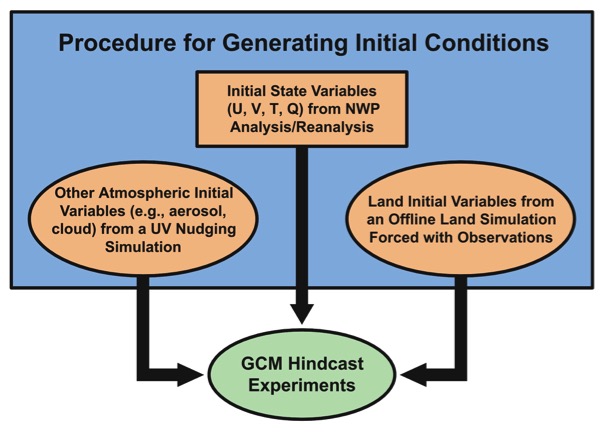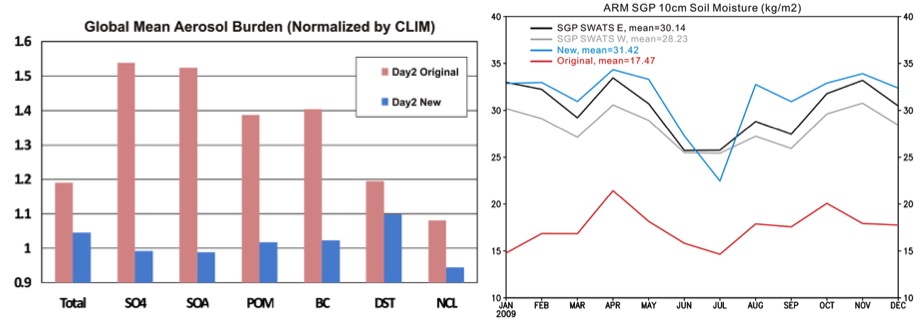An improved hindcast approach for evaluation and diagnosis of physical processes in GCMs
Submitter:
Ma, Hsi-Yen — Lawrence Livermore National Laboratory
Area of research:
General Circulation and Single Column Models/Parameterizations
Journal Reference:
Science
Performing short integrations of atmospheric climate models initialized with the analyses from numerical weather prediction centers (i.e. the Transpose-AMIP or CAPT approach) is now a widely accepted and used technique to diagnose the contribution of fast physical processes in the atmosphere to long-term errors in climate simulations. Nevertheless, one of the major challenges for using a hindcast approach to diagnose model problems is to obtain proper initial conditions (ICs), absent a data assimilation system.
Impact
Scientists at Lawrence Livermore National Laboratory, as well as collaborators from National Taiwan University and Pacific Northwest National Laboratory, present an improved procedure of generating ICs for climate model hindcast experiments with specified sea surface temperature and sea ice. The goal is to minimize errors in the ICs and lead to a better evaluation of atmospheric parameterizations' performance in the hindcast mode. They apply state variables (horizontal velocities, temperature and specific humidity) from the operational analysis/reanalysis for the atmospheric initial states. Without a data assimilation system, they apply a two-step process to obtain other necessary variables to initialize both the atmospheric (e.g., aerosols and clouds) and land models (e.g., soil moisture). First, they nudge only the model horizontal velocities towards operational analysis/reanalysis values, given a 6-hour relaxation time scale, to obtain all necessary variables. Compared to the original strategy in which horizontal velocities, temperature and specific humidity are nudged, the revised approach produces a better representation of initial aerosols and cloud fields, which are more consistent and closer to observations and model's preferred climatology. Second, they obtain land ICs from an offline land model simulation forced with observed precipitation, winds, and surface fluxes. This approach produces more realistic soil moisture in the land ICs.
Summary
With this refined procedure, the simulated precipitation, clouds, radiation, and surface air temperature over land are improved in the Day 2 mean hindcasts. Following this procedure, they also propose a “Core” integration suite which provides an easily repeatable test allowing model developers to rapidly assess the impacts of various parameterization changes on the fidelity of modeled cloud-associated processes relative to observations.



